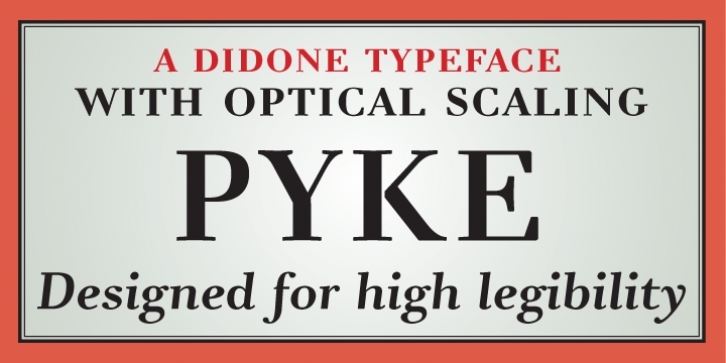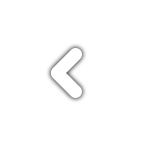


 Designer:
Designer: Sofie Beier
Publisher: Sofie Beier
The typeface
Pyke, called after the legibility researcher Richard Lionel
Pyke, is a serif typeface inspired by the work of Giambattista Bodoni.
An early version of the typeface underwent experimental legibility examinations of distance and time threshold approaches *. Participants were exposed to different variations of the most often misread lowercase letters. The findings, which were executed in the last styles, demonstrated that in a brief exposure the italic design 'l' with a tail has a greater visibility than the 'l' with serifs at the bottom, that the Italic style coming down 'f' is more noticeable at range than the Roman style 'f', that a closed aperture of the 'e' reduces visibility in a brief direct exposure, which the very same goes for the closed aperture of the 'c' at distance.
The typeface family
Pyke is size particular, consisting of variations for Micro, Text, and Display.
PykeMicro is developed for little point sizes of 8 or less,
PykeText is for running text at routine text sizes of 9-14 points, and
PykeDisplay is created for the larger print sizes.
PykeText and Micro are both influenced by Giambattista Bodoni's earlier work having elements of the Transitional typeface custom.
To improve readability and reduce the vertical feeling, the rising lowercase stems of
PykeText and Micro are bent a little forward, the Didone style high contrast and radical shift between horizontal and vertical counters have been reduced, and the lowercase letters 'e' and 'c' have a diagonal axis.
Historic traditions dictate the Didone design narrow characters to be additional narrow. However, to improve the horizontal circulation this custom was overlooked in the text versions of
Pyke; instead, focus was provided to the forward motion by widening and opening the loops in both characters 'j' and 'f'. Another ignored Didone style function in
PykeText and Micro is the heavy teardrops on the letters 'f', 'j', 'a', 'c' and 'r', which appear to improve the vertical motion in the letters.
Compared to the 2 text variations of
Pyke, the display screen variation has a smaller x-height, larger contrast and narrower letters. Because headlines and titles frequently appear in plus sizes at a close reading range, readability might in these scenarios be less considerable than in versions for running text. In addition, headings rarely consist of longer paragraphs, and are typically perceived in couple of fixations. A horizontal focus is consequently not as essential, and so the Didone design tradition, such as: narrow letters 'j', 'f' and 't', the heavy teardrops, and the high stroke contrast, can be applied. By emphasising these somewhat legibility unpleasant Didone functions in the bigger sizes alone, the typeface
PykeDisplay will in mix with
PykeText and
PykeMicro, include an element of elegance and sophistication to the layout without triggering the reader strain.
* Beier, S. & & Larson, K. (2010) 'Design Improvements for Often Misrecognized Letters', Details Style Journal, 18( 2 ), 118-137
Font Family: Tags: agate, didone, legible, neo-didone, optical sizes, readability, scientific, serif, small sizes, text, transitional




 The typeface Pyke, called after the legibility researcher Richard Lionel Pyke, is a serif typeface inspired by the work of Giambattista Bodoni.
The typeface Pyke, called after the legibility researcher Richard Lionel Pyke, is a serif typeface inspired by the work of Giambattista Bodoni.
